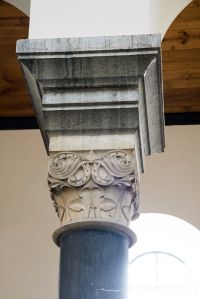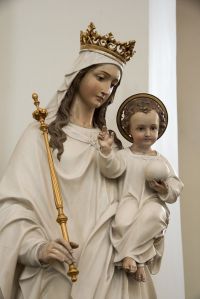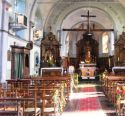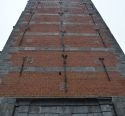Collegiate Church | IX-XIX | Romanesque | Catholic Church


Map
Opening hours
01 April - 31 October
Mon 9.00 - 18.00
Tue 9.00 - 18.00
Wed 9.00 - 18.00
Thu 9.00 - 18.00
Fri 9.00 - 18.00
Sat 9.00 - 18.00
Sun 9.00 - 18.00
01 November - 31 March
Mon 10.00 - 16.00
Tue 10.00 - 16.00
Wed 10.00 - 16.00
Thu 10.00 - 16.00
Fri 10.00 - 16.00
Sat 10.00 - 16.00
Sun 10.00 - 16.00
Religious offices
Description
The history of this church is connected with that of the Saint Peter Abbey which is very close by, destroyed by the French revolutionary troops in 1794. It was a place of pilgrimage for saint Ursmar, one of the first founders of the abbey.
The building is a solid witness to that which was the Carolingian churches (or pre Romanesque) surmounted by a vast western tribune. The Romanesque parts of the church are also interesting. It has a plan in the shape of a Latin cross. The nave is the oldest part of the church. The vaulted crypt is impressive. It is built to a rectangular plan that reproduces that of the choir.
It contains the sarcophagus of Saint Ursmar and numerous tombstones of former abbots. The tower, dating from the 11th century, is 32m high. Its termination in a saddleback roof was completed in the 19th century.
KIKIRPA : Photo-library on-line
Wikipedia : Ursmar of Lobbes
1200 years of the collegiate church - 1
1200 years of the collegiate church - 2
Photos
Media
Remarkable elements
Statues
Near the side entrance there is a beautiful carved and polychromed Calvary. The statues of the Virgin and St. John date from the late 16th and early 17th centuries, while the Christ on the Cross is and dates from later, in the 18th century.
Other statues in the transept of the church, near the staircase to the choir, also date from this century. They are made of wood and represent Saint Catherine, Saint Anthony and Saint Francis.
Altars
The main altar and several secondary altars, especially in the arms of the eastern transept or pseudo-transept, were built at the end of the 19th century. They are in the neo-Romanesque style and are the work of the Pierre Peeters workshop in Antwerp, based on drawings by the architect Sonneville of Tournai. They are made of a very soft white stone.
Christ on the cross
In the corridor along the south side of the crypt there is a gigantic polychrome Christ on the Cross. The 17th century Christ was placed on a 16th century cross.
The crypt
On either side of the Romanesque altar, the crypt contains the sarcophagi of St. Ursmer (right) and St. Ermin (left), which date back to the 8th century.
Two beautiful tombstones from the Renaissance period are embedded in the crypt walls. The recumbents are depicted in the centre of a typical Renaissance architecture.
Gravestone of Guillaume Caulier
The Theux marble tombstone of Guillaume Caulier, abbot of Lobbes from 1523 to 1550, has the particularity of being heavily patinated at the bottom, a testimony to the fervour of pilgrims suffering from lower back pain. Indeed, it would seem that the representation of the former abbot was confused with that of Saint Dodon, invoked for back pain.





















































